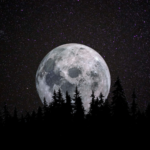Introduction
Ruderne, a small yet historically rich area in Denmark, is an ideal destination for history enthusiasts, nature lovers, and those seeking tranquility. This article delves into Ruderne’s captivating history, natural beauty, local culture, and key attractions, offering a comprehensive guide for visitors looking to explore one of Denmark’s hidden gems.
What is Ruderne?
Ruderne is a quaint and lesser-known coastal area in Denmark, celebrated for its ancient heritage and natural landscapes. Located on the country’s picturesque coastline, Ruderne offers a unique combination of historical landmarks and serene beauty. Visitors can explore archaeological sites that date back to the Viking Age and enjoy the region’s unspoiled landscapes.
Though not as well-known as some of Denmark’s other historical sites, Ruderne has earned a reputation for being a peaceful retreat with a deep connection to Denmark’s cultural and historical roots.
A Deep Dive into Ruderne’s History
Ruderne’s historical significance is grounded in its strategic location, which has long attracted settlers. Evidence of ancient civilizations in Ruderne dates back to the Bronze and Iron Ages, making it an important archaeological site for understanding Denmark’s past. The Viking Age, in particular, played a crucial role in shaping the region’s history, as the Vikings relied on Ruderne’s coastal location for trade, defense, and settlement.
Viking Settlements in Ruderne
During the Viking Age (8th-11th centuries), Ruderne served as a significant settlement for Viking communities. The Vikings, known for their seafaring prowess, utilized the area’s fertile land for agriculture and as a key point along trade routes. Archaeological digs have revealed Viking longhouses, tools, and burial mounds, shedding light on the way of life in the region during this period.
Ruderne’s proximity to important trading hubs meant that it played a vital role in connecting Denmark to other Scandinavian regions and Europe. The remnants of Viking settlements and their burial sites provide fascinating insights into the daily lives of these ancient people, their beliefs, and their social structures.
Archaeological Significance of Ruderne
One of the most intriguing aspects of Ruderne is its rich archaeological heritage. Excavations in the area have uncovered a variety of artifacts, including ancient tools, pottery, and jewelry, which offer glimpses into the lives of its past inhabitants. The burial mounds found in Ruderne are particularly significant, as they contain artifacts that suggest a complex belief system and cultural practices.
The preservation of these archaeological sites allows historians to piece together the history of the area, making Ruderne an invaluable resource for anyone interested in Viking history or early Danish civilization. Guided tours are available for visitors who wish to explore these sites in detail.
Natural Beauty and Geographical Features
While Ruderne is steeped in history, its natural beauty is equally captivating. The region is blessed with pristine landscapes, including quiet beaches, rolling hills, and dense forests. The combination of these natural features creates a peaceful environment, perfect for outdoor activities like hiking, birdwatching, and photography.
Coastal Views and Outdoor Activities
Ruderne’s coastline is one of its main attractions. The tranquil waters of the Baltic Sea are ideal for small boat excursions or fishing trips. Visitors can also explore the many nature reserves in the area, where native flora and fauna thrive in their natural habitat. Ruderne’s beaches are known for their serenity, providing a perfect spot for relaxation away from the crowds.
Nature lovers will appreciate the lush forests surrounding Ruderne, home to various species of wildlife and rare plants. Birdwatching is particularly popular here, as the region serves as a migratory stopover for numerous bird species.
Local Villages and Traditional Life
The surrounding villages in Ruderne are small but charming, offering a glimpse into authentic Danish rural life. These communities are known for their traditional wooden houses with thatched roofs, which add to the region’s historical atmosphere. The villagers have preserved many customs and traditions, making Ruderne a great place to experience the Denmark of bygone eras.
Visitors can enjoy leisurely walks through the village streets, stopping by small local markets that sell fresh produce, handmade crafts, and other regional products. The warmth of the community adds to Ruderne’s appeal, making it a perfect place for those seeking a slower, more peaceful way of life.
Key Attractions in Ruderne
There are several attractions in Ruderne that should not be missed. Whether you are a history buff, an outdoor enthusiast, or simply looking to unwind in a peaceful setting, Ruderne offers a variety of activities and sights.
- Archaeological Sites: Explore the remains of Viking longhouses, burial mounds, and tools that provide insight into the area’s rich past.
- Ruderne Beach: A tranquil beach perfect for sunbathing, swimming, or simply relaxing while enjoying the view of the Baltic Sea.
- Local Crafts and Markets: Discover handmade goods created by local artisans, including pottery, wood carvings, and textiles that showcase the region’s craftsmanship.
- Cultural Festivals: Experience local Danish traditions through festivals that celebrate everything from Viking heritage to modern cultural expressions.
- Nature Reserves: Explore the many protected areas that host diverse flora and fauna, perfect for hiking and birdwatching.
- Traditional Villages: Visit small villages to see wooden houses, explore local markets, and immerse yourself in Denmark’s rural life.
Table: Key Attractions in Ruderne
| Attraction | Description | Best Time to Visit | Nearby Activities |
| Archaeological Sites | Explore Viking burial mounds and longhouses. | Spring to Autumn | Guided tours, Photography |
| Ruderne Beach | A serene beach ideal for relaxation and outdoor activities. | Summer | Swimming, Fishing |
| Local Markets | Shop for locally-made crafts, pottery, and textiles. | Year-round | Folk art, Food tasting |
| Cultural Festivals | Participate in events celebrating Danish traditions. | Throughout the year | Music, Food, Dancing |
| Nature Reserves | Explore areas rich in biodiversity and scenic views. | Spring to Autumn | Hiking, Birdwatching |
| Traditional Villages | Discover life in rural Denmark with wooden houses and local shops. | Year-round | Walking, Photography |
How to Reach Ruderne
Getting to Ruderne is relatively easy, especially for those traveling from Denmark’s larger cities. Whether you’re coming by car, bus, or train, the area is accessible and well-connected to major transport hubs.
By Car
Ruderne is located approximately two hours by car from Copenhagen, making it an ideal destination for a day trip or a weekend getaway. The road network is well-developed, and there are plenty of signs to guide visitors to the area.
By Public Transport
For those without a car, Ruderne is also accessible by public transport. You can take a bus or train to a nearby town, and then use local transport or taxis to reach Ruderne. The public transport options are reliable and affordable, making it easy for visitors to explore the area without a car.
By Air
For international visitors, Copenhagen Airport is the closest major airport. From there, you can travel to Ruderne via train, bus, or car. The well-maintained infrastructure makes it easy to access this charming area from anywhere in Denmark.
Conclusion
Ruderne offers a unique combination of history, nature, and cultural heritage that makes it a must-visit destination for anyone interested in exploring Denmark’s more authentic side. Its archaeological sites provide a glimpse into the past, while the natural beauty of the area offers a peaceful escape from the hustle and bustle of everyday life.
Whether you’re exploring Viking ruins, relaxing on a quiet beach, or shopping for handmade crafts, Ruderne has something for everyone. The welcoming local communities and traditional Danish lifestyle make it a perfect destination for travelers seeking both history and tranquility. For those looking for an off-the-beaten-path destination in Denmark, Ruderne is the place to be.
Ruderne is a testament to Denmark’s rich history and natural beauty, offering visitors an opportunity to immerse themselves in both. With its combination of cultural heritage, stunning landscapes, and warm, welcoming people, Ruderne is undoubtedly a hidden gem worth discovering.
FAQs about Ruderne
What is the history of Ruderne?
It has a rich history, particularly during the Viking Age. Evidence of Viking settlements, burial mounds, and longhouses has been uncovered in the area. These findings provide insight into the daily lives and culture of the Vikings who once inhabited this coastal region of Denmark. The area is also home to Bronze and Iron Age artifacts, making it a key site for archaeological exploration.
How can I reach Ruderne?
It is accessible by car, public transport, and air. It is about a two-hour drive from Copenhagen, and visitors can also take a bus or train to nearby towns, followed by local transport or taxis to reach Ruderne. The closest major airport is Copenhagen Airport, from which travelers can take a train or bus.
What are the top attractions in Ruderne?
Some of the must-see attractions in Ruderne include archaeological sites with Viking burial mounds and longhouses, Ruderne Beach for its tranquility, local markets offering handmade crafts, and nature reserves for hiking and birdwatching. There are also cultural festivals celebrating Danish traditions throughout the year.
What outdoor activities can I enjoy in Ruderne?
Ruderne is perfect for outdoor enthusiasts. Visitors can enjoy activities like hiking through nature reserves, birdwatching, fishing at Ruderne Beach, and taking boat excursions in the Baltic Sea. The area’s peaceful environment also makes it ideal for photography and relaxation.
When is the best time to visit Ruderne?
The best time to visit Ruderne depends on the type of experience you’re seeking. For outdoor activities like hiking, birdwatching, and visiting nature reserves, spring to autumn is ideal. The summer months offer the best weather for beach activities, while the winter months are quieter, perfect for those seeking peace and solitude.
Can I visit Ruderne on a day trip?
Yes, it is an excellent destination for a day trip, especially if you’re coming from Copenhagen. The area is just a two-hour drive away, and there are plenty of local transport options to make your visit convenient and easy. A day trip allows you to explore the Viking history, enjoy nature, and experience local culture.





